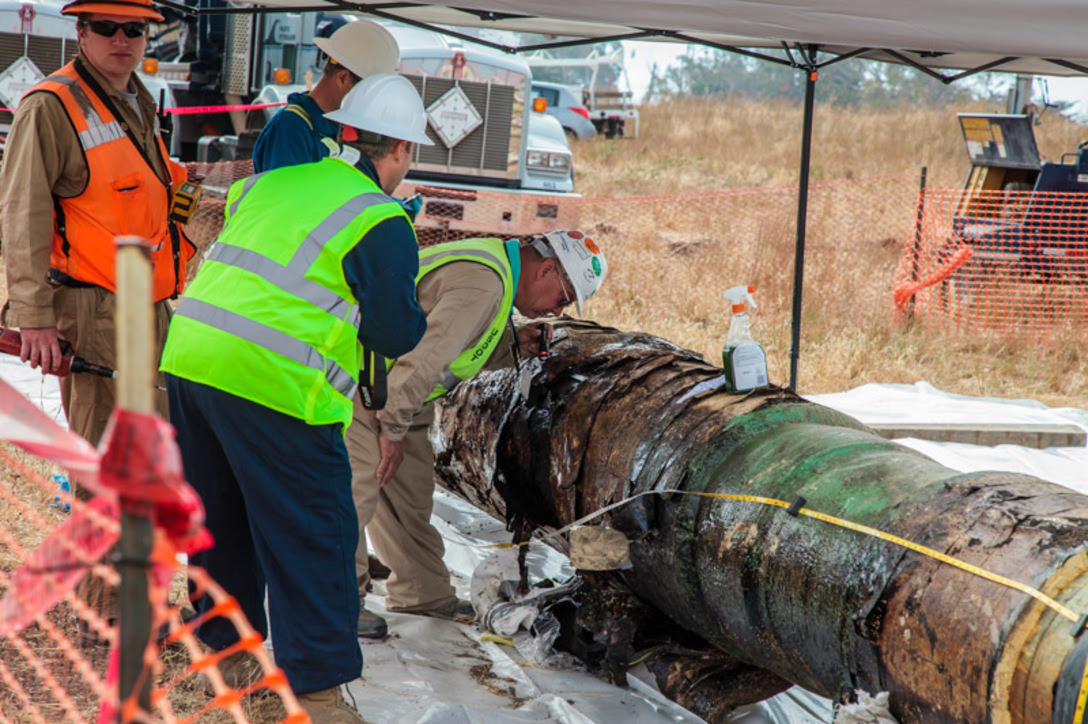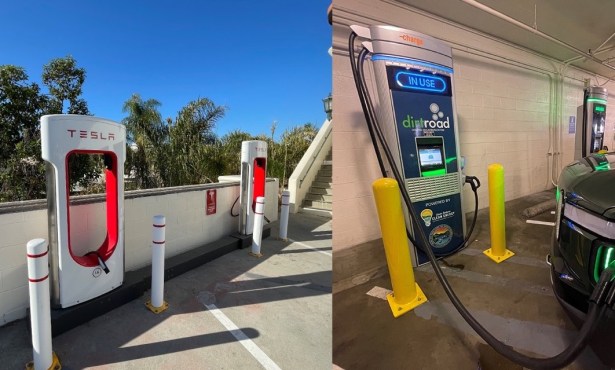New Owner for Pipelines 901 and 903 in Gaviota Approved
Planning Commission Meeting a Mishmash of Exxon Companies and Another Owner in the Wings

“There’s no dispute that ExxonMobil has the financial capacity here,” said the oil-and-gas giant’s lawyer on Wednesday, perhaps the only indisputable assertion made during a Planning Commission hearing full of conflicting information. What was under consideration was whether the County of Santa Barbara would approve the sale of the pipeline that ruptured and caused 2015’s Refugio Oil Spill.
Plains All American Pipeline, which had been found negligent and paid a $60 million settlement, was selling the pipeline to Pacific Pipeline Company, a company under Exxon’s “umbrella.” ExxonMobil was giving a financial guarantee of $100 million against any “incidents associated with the pipeline system,” the staff report stated.
It’s a drop in the bucket for a company worth $426 billion and in the Fortune 5, as its attorney Dawn Sestito pointed out. And it was convincing to three of the four planning commissioners present, who voted to approve the transfer 3 to 1.
Not only is Pacific Pipeline buying what is now called Las Flores Pipeline System from Plains, ExxonMobil Pipeline Company (apparently also known as EMCo and EMPCo) will operate it. EMCo was being guaranteed by the same $100 million. The transfer approval, which is required by County Code Chapter 25B, was originally established to ensure that successive owners of any oil enterprise would not be a fly-by-night operation. As Commissioner Vincent Martinez said, “If there’s any mishap, Exxon is on the line for it.”
Now Just Wait a Minute
Not all present agreed. Santa Barbara attorney Barry Cappello asked about Sable, another company supposedly waiting to acquire not only the pipeline, but the oil and gas facility in Las Flores Canyon and the offshore Santa Ynez Unit — platforms Hondo, Harmony, and Heritage — for $300 million. “If in two weeks Sable takes over and owns the pipeline, who is the guarantor then? I don’t know. I can’t tell you. But I will say, as I have said all along, what’s the rush?” asked Cappello.
“Exxon has written off the platforms and the pipeline,” Cappello claimed. “It has already taken a $20 billion loss on its 2022 taxes. They’re not going to be the owner of the pipeline. So what’s the rush? Exxon has more money than God, and I’m glad they’re here rather than Plains,” said Cappello. “But they’re not going to be here for long. We’re going to be dealing with Sable.”
Planning Commissioner Laura Bridley asked Sestito point-blank why, if Sable was ready to buy the pipeline, did Exxon want to acquire this asset temporarily? Sestito admitted she didn’t have the background to know but surmised, “They wouldn’t have entered into it if it wasn’t in the best interests of the company.”
A staff report outlined the background leading up to Wednesday’s hearing:
EMPCo had applied to be the temporary operator of Line 901 and Line 903 — which run 122 miles from the oil facility in Las Flores Canyon and along the Gaviota Coast, then head for Kern County across the Cuyama Valley. When the county approved that change, landowners represented by Cappello & Noël, as well as the Environmental Defense Center for Get Oil Out! and Ana Citrin for Gaviota Coast Conservancy appealed the approval. Those appeals became moot when EMPCo completed its permanent application on May 15, 2023.
Sestito told the commissioners that waiting was not an option: “We bought the asset, and your ordinance requires us to come in here and get these approvals. That’s why we’re here.”
Cappello noted that regulation of the pipeline, as “intrastate” transport, or transport within the state, was under the responsibility of the State Fire Marshal. The public and the county lack a venue to comment on actions taken by California’s Fire Marshal, and these Planning Commission hearings are in a sense one of the Maginot lines environmentalists are digging to stave off the reopening of the pipeline, the offshore oil platforms, and Las Flores.
Digging for Denial
And dig they must. For example, the cathodic protection system that would slow the corrosion of the pipeline isn’t in the project description, the staff report explained. Instead, it’s found in the environmental report, though it’s clearly part of the project. What really irked Cappello was that the easements the pipeline crossed were said to satisfy the pipeline owner’s ability to work on it. Cappello has brought a class action lawsuit with 60 owners across 135 properties that the pipeline tunnels through; they are challenging Plains or Pacific’s access due to the length of time Line 901 has been dormant. That suit is now headed for trial.
The state of the pipeline’s cathodic protection system was also a large question during public comment. But, according to county staff, the system was operational and functioned as intended. As well, any “waiver” allowed by the state would only be for an equal or greater level of safety. Attorney Sestito doubled down on this, advising the commission that the pipe had been repaired, filled with an inert gas, and was holding pressure — clearly no leaks.
The attorneys in opposition all brought up a report prepared by PHMSA (the federal Pipeline and Hazardous Materials Safety Administration) after the Refugio spill that found Plains had not adequately maintained the pipeline for years. Attorney Linda Krop of the Environmental Defense Center explained the review had found that up to 89 percent of the pipeline’s wall thickness had deteriorated in places, and that “massive sections were corroded to the point that they would never be functional again.” The cathodic protection system had proved to be ineffective on buried insulated structures, like Line 901.
That was the key factor in Planning Commissioner John Parke’s solo “no” vote against the transfer of ownership. He read the description: “The entire pipeline would be protected from corrosion with cathodic protection systems consisting of groundbeds and rectifiers,” interpreting that to mean it was intended to work effectively. The disaster in 2015 showed it hadn’t been maintained and was not effective. Today, “It’s an ancient pipeline that’s been severely degraded,” Parke said. He compared the “holding pressure” argument to the 10-year-old tires on his horse trailer. The cathodic protection had originally been installed in a brand-new steel pipeline, Parke said, but like his horse-trailer tires: “They hold pressure, but they’re not safe.”
Sestito retorted: “It is completely incorrect to say the pipeline has not been repaired since the spill or has been sitting in disrepair.” In a federal Consent Decree signed by Plains in 2020, control over safety was given to PHMSA and OSFM, or the Office of the State Fire Marshal’s Pipeline Safety Division, who are “experts in pipeline safety,” she said. Sestito stated that if the pipeline were ever restarted, the pipeline integrity and rupture concerns would first be pursued.
The Consent Decree was part of the Plains settlement in 2020. Pacific Pipeline would now be subject to it, and also Sable if the company indeed buys all the Exxon operations in Gaviota.
The session on Wednesday brought some clarity to the confusion over the fact that there are two totally separate oil companies, each named “Sable.” Exxon has no corporate affiliation with the Texas company Sable Offshore Corporation, which is the company that may purchase the pipeline, Sestito said. Exxon does have an interest in Sable Offshore Energy Inc. of Canada, which has an operation in Halifax, Nova Scotia. “Despite the name Sable in it, it’s a totally different company than Sable Offshore Corporation.”
And, Sestito pointed out, “If the Sable transaction closes, it will have to come through this process. They will have to apply under 25B. They will have to come here and seek permission to have ownership and operatorship transferred.”



